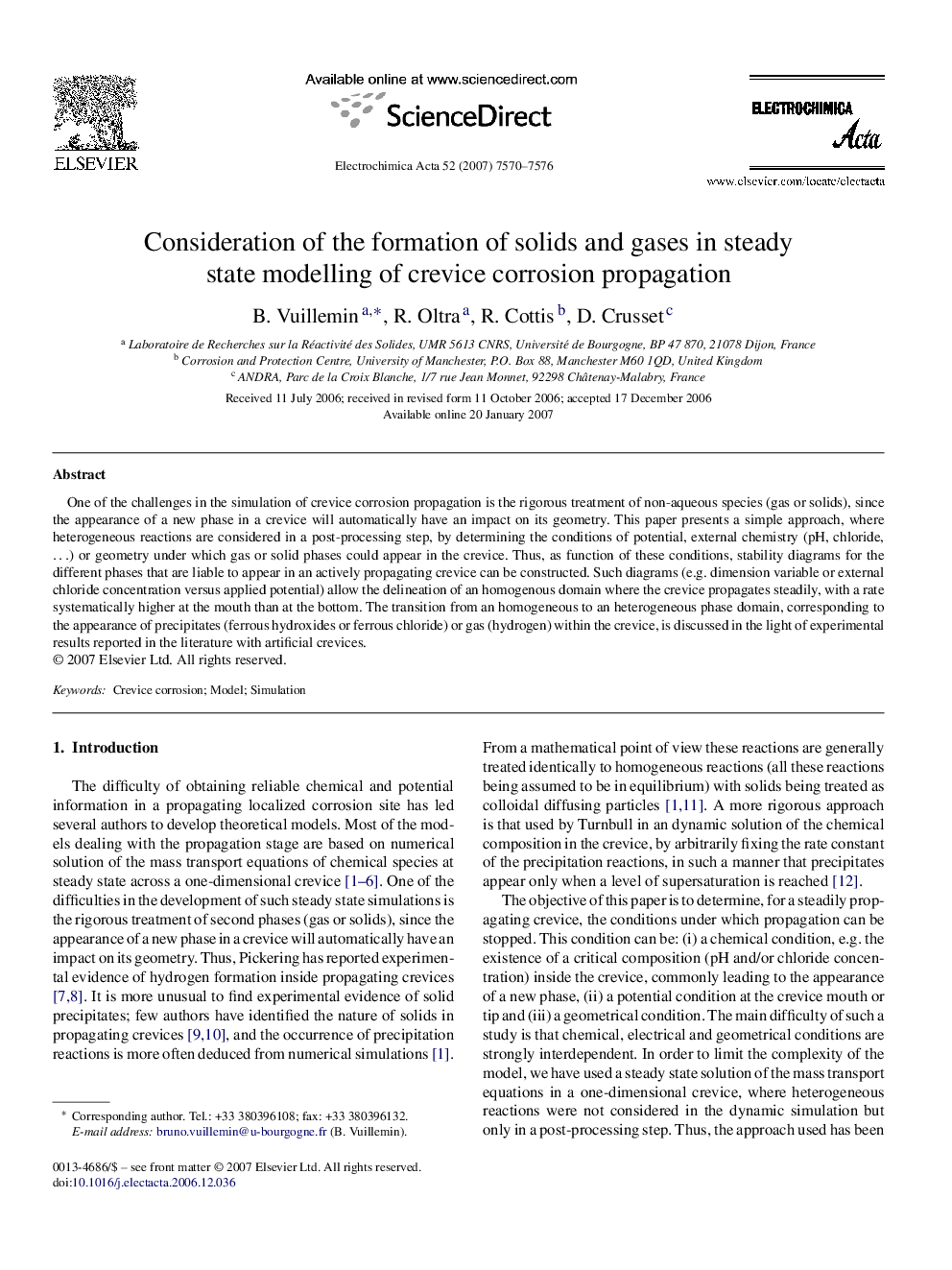| Article ID | Journal | Published Year | Pages | File Type |
|---|---|---|---|---|
| 194246 | Electrochimica Acta | 2007 | 7 Pages |
One of the challenges in the simulation of crevice corrosion propagation is the rigorous treatment of non-aqueous species (gas or solids), since the appearance of a new phase in a crevice will automatically have an impact on its geometry. This paper presents a simple approach, where heterogeneous reactions are considered in a post-processing step, by determining the conditions of potential, external chemistry (pH, chloride, …) or geometry under which gas or solid phases could appear in the crevice. Thus, as function of these conditions, stability diagrams for the different phases that are liable to appear in an actively propagating crevice can be constructed. Such diagrams (e.g. dimension variable or external chloride concentration versus applied potential) allow the delineation of an homogenous domain where the crevice propagates steadily, with a rate systematically higher at the mouth than at the bottom. The transition from an homogeneous to an heterogeneous phase domain, corresponding to the appearance of precipitates (ferrous hydroxides or ferrous chloride) or gas (hydrogen) within the crevice, is discussed in the light of experimental results reported in the literature with artificial crevices.
